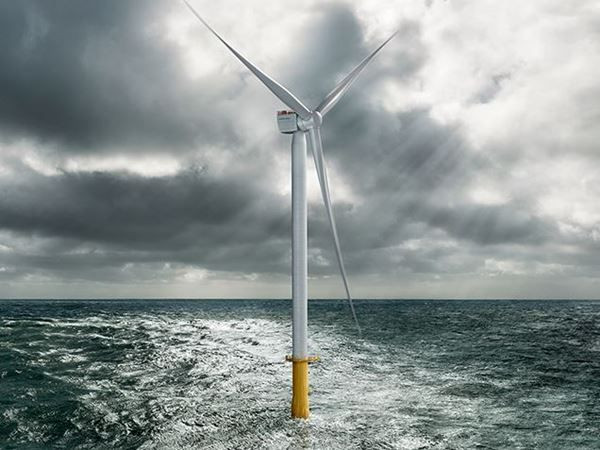Developers Planning To Build First Floating Wind Power Plant In Mediterranean Sea

KEY POINTS
- The turbines will be located about 21.7 miles off the coast of Marsala in western Sicily
- TetraSpar technology was developed by offshore wind expert Henrik Stiesdal
- Italy needs to develop 9,000 megawatts of new renewable energy capacity by 2030
Italian engineers and others are planning to construct what will become the first floating wind power plant in the Mediterranean Sea.
The 750 million euro ($845 million) “7SeasMed” project will be comprised of 25 floating wind turbines each producing up to 10 megawatts of power. The turbines will be located about 35 kilometers (21.7 miles) off the coast of Marsala in western Sicily, but will not be visible from the shore.
Floating wind farms have arisen from a new technology -- TetraSpar -- that allows turbines to operate in deep water. The waters of Marsala are 300 meters (984 feet) in depth.
The TetraSpar technology was developed by offshore wind expert Henrik Stiesdal, formerly the chief technology officer at Siemens.
The TetraSpar technology already produces about 600 megawatts of power worldwide.
The new Sicily project will use 25 Siemens Gamesa Renewable Energy (SGRE) SG10-193 turbines.
“An ambitious plan like this is an investment in the next 25 or 30 years, and so it has to look beyond a temporary drop in oil prices,” said Edo Ronchi, a former Italian environment minister and currently the president of the Foundation for Sustainable Development.
The wind project will be a partnership between Italian developers, Danish offshore wind project developer Copenhagen Offshore Partners and Copenhagen Infrastructure Partners, an infrastructure investment firm based in Denmark. The enterprise is also part of a broader strategy to increase renewable energy production under terms of the European Union environmental agreements.
“To reach European [Union] goals for 2030, Italy needs to develop 9,000 megawatts of new renewable energy capacity by 2030 and so a project like this one that will produce 250 megawatts of power is indispensable,” added Ronchi.
Luigi Severini, a senior engineer for the project, said the locale near Marsala was selected because of wind velocity considerations.
“This part of the Sicilian coast and part of the coast off of Sardinia have the greatest potential for wind energy in the entire Mediterranean,” Severini said.
Severini also noted that floating turbines are advantageous in that they could be moved if necessary, although that will probably not occur since the turbines will be situated away from shipping lanes and commercial fishing regions.
Subject to environmental impact assessments and the granting of permits by local governments, the turbines are expected to be installed in 2023 and will start generating energy in the following year.
Copenhagen Offshore Partners is also involved in various other offshore wind farms, including Vineyard Wind in the U.S. and Australia’s Star of the South.
Over the past ten years, other offshore wind projects were proposed for Italian waters but have failed to make much progress.
Severini also is involved in the project for a 30 megawatt offshore wind farm of Taranto in the Adriatic Sea.
BBC reported that the world's first floating wind power farm – off the coast of Scotland – started generating electricity in late 2017.
That endeavor -- known as Hywind – comprises five large turbines connected to the seabed about 15 miles from Peterhead on the northeast coast of Scotland.
The first minister of Scotland Nicola Sturgeon said at the time project would generate enough power for about 20,000 homes.
Norwegian energy company Statoil (now called Equinor) had been working on the project, for more than 15 years.
"Hywind's presence in Scottish waters is a reminder that, as the windiest country in Europe, and with some of the deepest waters and most promising offshore wind sites, Scotland is perfectly placed to capitalize on floating turbine technology,” said Claire Mack, chief executive of Scottish Renewables, which represents the Scottish renewable energy industry. "Our unique offshore supply chain and the skillset it supports put us at the forefront of the deployment of these innovative machines."
© Copyright IBTimes 2024. All rights reserved.





















